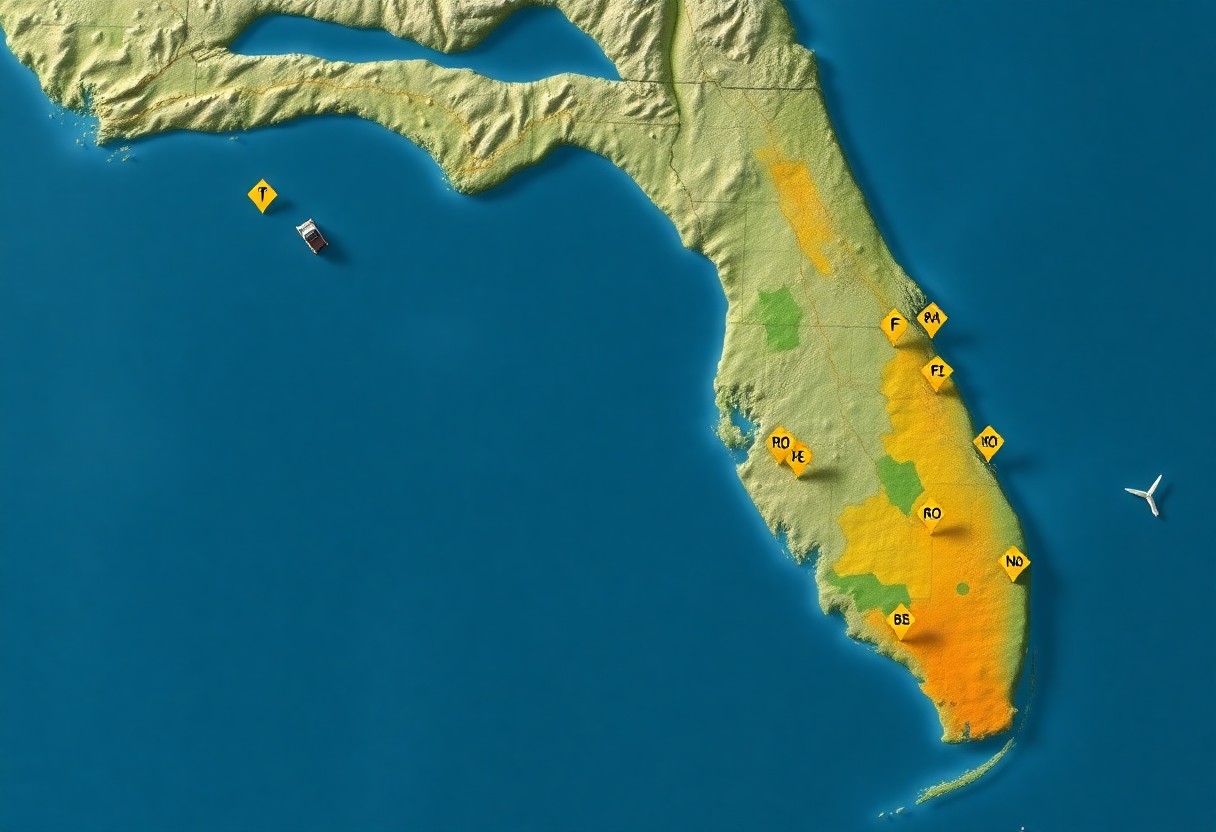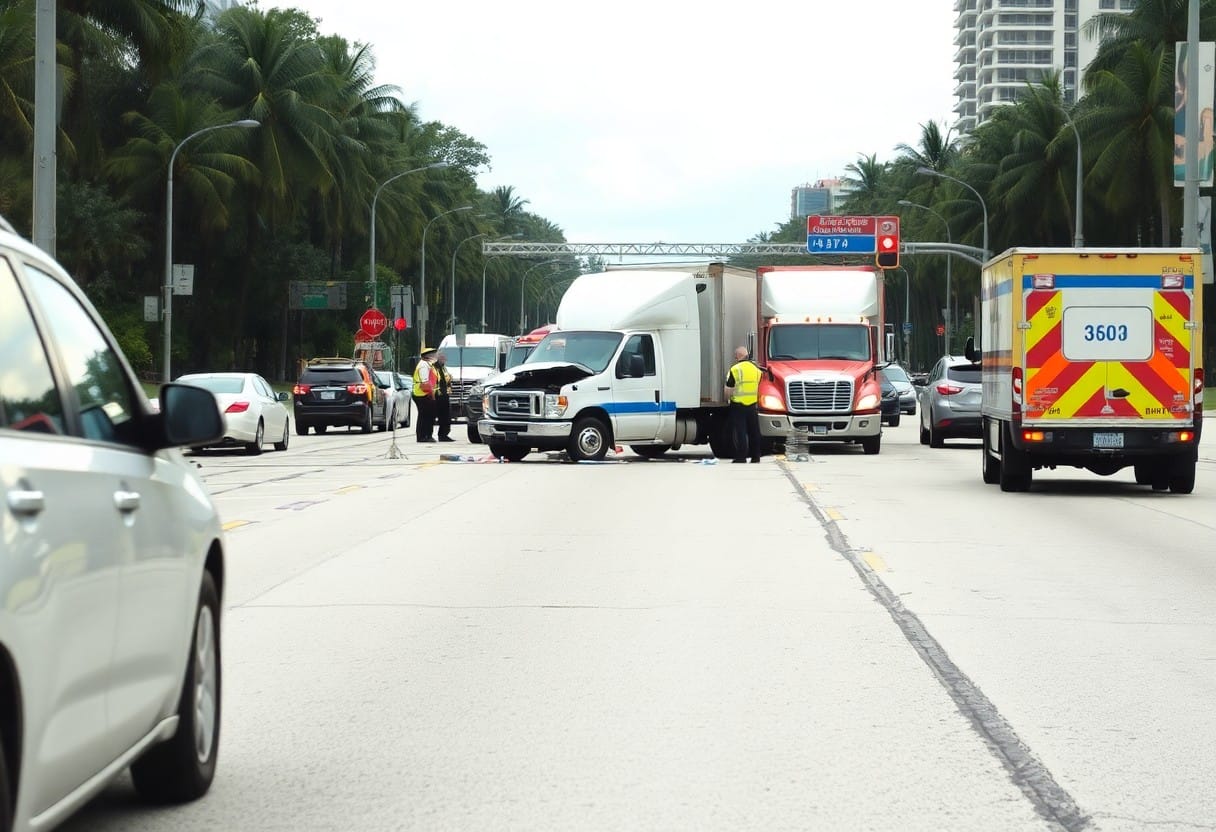Just as you navigate through busy roads, understanding the science of truck stopping distances is imperative for your safety. Large vehicles require significantly more stopping distance due to their weight and momentum, impacting how you interact with them on the road. By recognizing factors such as speed, road conditions, and truck load, you can make informed decisions that enhance your safety and that of others. This knowledge empowers you to maintain a safe distance and be mindful, ultimately creating a safer driving experience in mobile traffic.
Understanding Stopping Distances
While driving, it’s necessary to understand how stopping distances vary with different vehicles, especially trucks. The stopping distance is the sum of the reaction distance and braking distance, both of which can significantly impact road safety. Proper awareness of stopping distances can help you maintain adequate space between vehicles and reduce the likelihood of collisions.
Factors Affecting Stopping Distance
About stopping distances, several factors come into play that can influence how quickly your truck can come to a halt:
- Vehicle weight
- Road conditions
- Driver reaction time
- Braking system efficiency
- Speed
Recognizing how these factors interplay can significantly enhance your driving safety.
The Role of Speed and Weight
Before discussing speed and weight, it’s vital to understand their significant influence on stopping distances. The faster you drive, the longer it takes to stop—this is particularly true for heavier trucks. Your stopping distance increases exponentially with speed due to the basic physics of motion. Additionally, a heavier truck will require more distance to stop, as it has greater momentum. It’s necessary to adjust your driving habits accordingly.
Even small changes in your speed and the weight of your truck can have a serious impact on your stopping distance. At high speeds, even a minor increase can lead to dramatically longer stopping distances, putting you and other road users at risk. Consider how the truck’s weight contributes to its momentum; a heavier vehicle requires significantly more braking power and distance to stop effectively. Adjusting your driving to factor in both speed and weight can enhance safety on the roads.
The Physics of Stopping
Now, let’s research into the fundamental physics that govern stopping distances, particularly for trucks in mobile traffic. Understanding the dynamics of stopping helps you grasp the various forces at play, including speed, weight, and environmental conditions. These factors combine to dictate how much distance is required for a heavy vehicle to come to a complete halt safely. With this insight, you can better appreciate the importance of maintaining appropriate following distances and reacting promptly in traffic situations.
Kinetic Energy and Momentum
By grasping the concepts of kinetic energy and momentum, you can understand why trucks require longer stopping distances. Kinetic energy, the energy of motion, increases with the square of the speed. Thus, a truck moving at higher speeds possesses significantly more energy, making it harder to stop quickly. Similarly, the momentum of a heavy truck impacts its ability to decelerate suddenly. A greater mass and speed compound these challenges, emphasizing the importance of safe driving practices.
Friction and Brake Systems
Energy lost through friction and the efficiency of brake systems significantly influence stopping distances. A truck relies on various braking technologies to convert kinetic energy into heat, allowing it to slow down. The quality of the brakes, tire condition, and road surface can all alter friction levels. Thus, the effectiveness of your braking system impacts your ability to stop effectively, showcasing the critical balance between speed and safety.
Plus, understanding the mechanics of your vehicle’s braking system is vital for your safety on the road. A well-maintained brake system provides adequate stopping power, while worn-out brakes can lead to danger. Remember that poor tire traction can greatly increase stopping distances, especially in adverse weather conditions. Regularly checking your tires and brakes ensures optimal performance when you need it the most, reducing the risk of accidents during sudden stops.
Truck Specifications and Design
Clearly, the specifications and design of trucks significantly influence their stopping distances. Trucks are built with heavier frames, bigger engines, and larger brakes compared to standard vehicles, which impacts their overall performance and braking efficiency. Understanding these design differences is crucial for evaluating how trucks respond to braking scenarios in mobile traffic.
Differences Between Trucks and Cars
Specifications of trucks differ greatly from cars, particularly in size, weight distribution, and braking systems. Trucks are generally heavier and longer, necessitating more time and distance to come to a complete stop. This fundamental difference underscores the importance of awareness when interacting with trucks on the road.
Importance of Load and Trailer Characteristics
Truck loading and trailer characteristics play a significant role in stopping distances. The weight distribution and load stability directly affect how quickly a truck can decelerate. For example, a heavily loaded trailer can greatly increase stopping distances, while an unbalanced load can cause loss of control during braking.
And, understanding load and trailer characteristics is vital for safety on the roads. A properly balanced load can ensure more efficient braking and reduce the risk of jackknifing or swerving. On the other hand, a poorly loaded trailer may lead to dangerous conditions, affecting your ability to stop effectively. By recognizing these factors, you can help prevent accidents and contribute to safer driving practices within mobile traffic environments.
Environmental Factors
Despite your best driving efforts, environmental factors significantly affect stopping distances for trucks. Key elements include:
- Weather conditions
- Road surface quality
- Visibility
- Traffic density
Recognizing these influences can help you anticipate potential delays and adjust your driving accordingly.
Road Conditions and Weather
Against a backdrop of unpredictable weather and road conditions, your ability to react becomes pivotal. Wet, icy, or poorly maintained roads can dramatically lengthen stopping distances, putting you and others at risk. You must always assess the situation and adapt your driving to the conditions.
Visibility and Reaction Times
Below optimal visibility conditions, your reaction times may be severely impacted, resulting in longer stopping distances. Low light or inclement weather can obscure your view, leading to delayed responses. It’s vital to enhance your awareness and adjust your speed appropriately.
In addition, poor visibility due to fog, heavy rain, or nighttime driving necessitates a reduction in speed to improve your ability to react. Be aware that reaction times can double in adverse conditions, meaning that your stopping distance increases significantly. Therefore, adjusting your following distance and ensuring your truck’s lights are in good working order can make a big difference in preventing accidents.

Technology in Stopping Distance Assessment
Not only does modern technology enhance safety, but it also plays a pivotal role in accurately assessing stopping distances in mobile traffic. As trucks are equipped with sophisticated systems, these advancements can significantly improve your awareness of vehicle capabilities and limitations when on the road.
Advanced Braking Systems
Distance is a critical factor in determining stopping distances, and advanced braking systems offer remarkable enhancements. These systems incorporate various features that work cohesively to enhance safety:
|
Impact of Telematics and Sensors
Sensors are integral to the modern assessment of stopping distances, providing real-time data that can improve driving strategies. By collecting information on speed, weather conditions, and road surfaces, telematics enables you to make informed decisions, enhancing your response time and situational awareness.
The integration of telematics and sensors into truck systems greatly influences how you engage with your driving environment. With real-time data analysis, these technologies can alert you to potential hazards, allowing for quicker reactions to avoid accidents. The use of advanced sensors continuously monitors vehicle performance and can initiate braking before you even recognize the danger, ultimately leading to a safer driving experience. Embracing these technologies not only augments your safety but also contributes to the efficiency of traffic flow, reducing the likelihood of bottlenecks and collisions.
Real-World Applications
All truck drivers and fleet operators need to understand the practical implications of stopping distances in mobile traffic. This knowledge can significantly enhance your safety protocols and improve overall traffic flow. By applying scientific findings to real-world scenarios, you can make better decisions when navigating through congested areas and ensuring that your vehicle is equipped for emergency stops.
Case Studies and Accident Analysis
On analyzing past incidents, you can see how stopping distances have played a role in accidents involving large trucks:
- Study A: 15% of accidents occurred due to insufficient stopping distance on wet roads.
- Study B: 20% of rear-end collisions involved trucks unable to stop in time.
- Study C: Average stopping distance for a fully loaded truck at 60 mph was recorded at 400 feet.
- Study D: 30% increase in accidents was noted when drivers followed too closely behind trucks.
Implications for Road Safety Regulations
Across the board, understanding truck stopping distances can lead to better road safety regulations. This knowledge can drive legislative changes aimed at improving driver training, enforcing speed limits, and enhancing road infrastructure.
For instance, implementing regulations for mandatory spacing between vehicles can reduce accidents caused by insufficient stopping distance. Moreover, encouraging technological advancements in braking systems could further enhance safety. By prioritizing these measures, you can contribute to a safer driving environment for yourself and others on the road.
Final Words
To wrap up, understanding the science behind truck stopping distances in mobile traffic is important for your safety on the road. By recognizing factors like speed, vehicle weight, and reaction time, you can better anticipate potential hazards and maintain a safe distance from larger vehicles. Your awareness not only enhances your driving skills but also contributes to overall road safety for everyone. Stay informed and proactive to navigate mixed traffic conditions confidently.



















